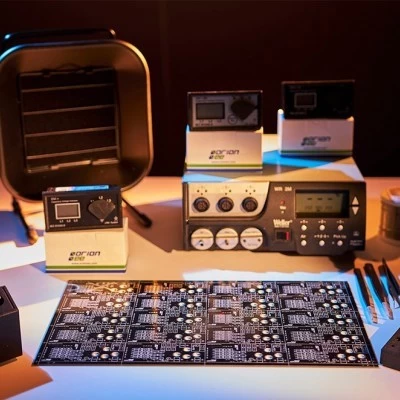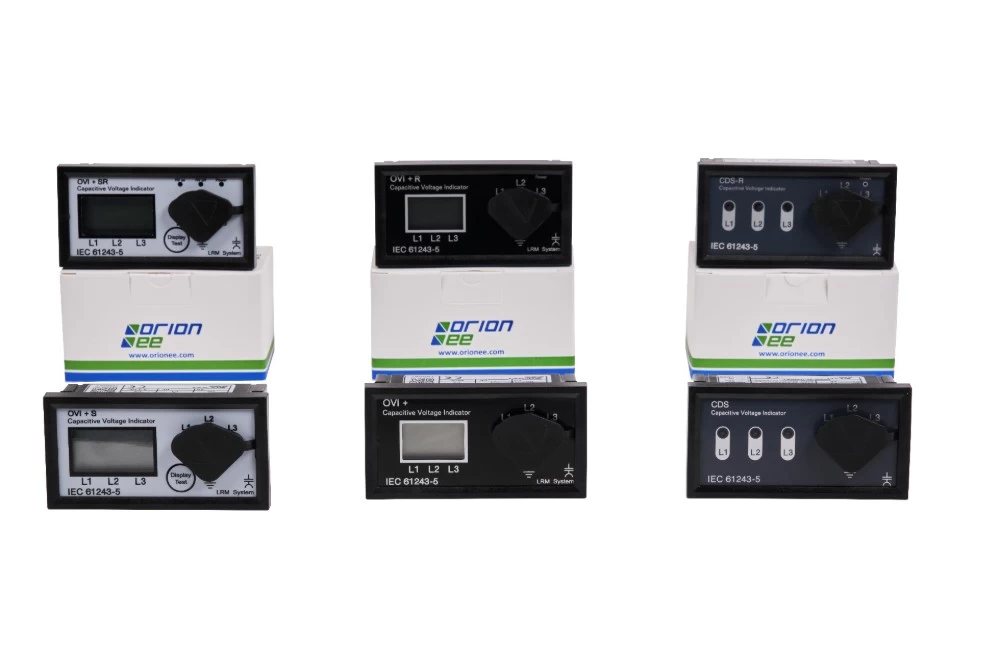Ferroresonance: A Practical and Simplified Look
This article is prepared to be an overview of the excellent and detailed articles [3] and [5] for a practical and simplified look to ferroresonance phenomenon. Therefore, it should be considered as such. A more interested reader is referred to the aforementioned articles.

Introduction
The term “Ferroresonance” first seen in the literature in 1920 [1]. It’s a non-linear and in some scenarios also a chaotic phenomenon which makes it hard to study. So much so that IEEE gathered a working group on the topic [2]. Ferroresonance may result with harmonics in extreme magnitudes as well as overvoltage and overcurrent in both transient and steady state. These consequences are hazardous for electrical equipment thus, cause harm on power systems [3]. Parameters of a system that prone to ferroresonance is in wide variety; ranging from the qualities of supply voltage to the design of transformers. Moreover, the damages of ferroresonance on the equipment occurs not at the first period of ferroresonance but rather at its next cycle. Because of this, analyzing events of ferroresonance is complicated. As a result, some inconceivable faults are accredited to it. Although this action is understandable, in some situations, it leads attributing failures that are caused by other reasons to the ferroresonance [4].
Definition of Ferroresonance
The most basic definition of ferroresonance is that a resonance in a circuit with a non-linear capacitance and inductance. In other words, ferroresonance may occur in a power system that a non-linear inductive element supplied through a non-linear capacitive element [5].
Capacitive elements can be:
- Especially long underground cables
- Capacitor banks
- Grading capacitors
- Capacitive Voltage Transformers (CVT)
Inductive elements can be:
- Voltage transformers (VT)
- Shunt Reactors
- Power Transformers (PT)
To generalize, analyses shows that a circuit which ferroresonance appears must have [2]:
- A voltage source
- A nonlinear, saturable inductance
- A capacitor
- Low losses (Low Damping or Low Load)
A more theoretical explanation is that; in the event of ferroresonance, a system which have above properties, jumps from its designed operating steady state to a new, unprecedented steady state and may continue to jump other steady states which have harmonics of high magnitude, overvoltage and overcurrent [3, 5].
A common and simple scenario [5] of which can be used as an example to explain ferroresonance is that a circuit consists of a transformer in no-load condition, energized through a distribution cable. If the internal capacitance of the transmission cable is negligible, this circuit can be modelled as:

Figure 1. Ferroresonance circuit in no load transformer(internal capacitance of the transmission cable is negligible)
Because the non-linearity of the core inductance of the transformer itself is negligible, ferroresonance is unlikely to occur in this circuit. However, if the internal capacitance of the transmission cable is large enough, it needs to be considered seriously (such as a long transmission cable), the circuit is modelled as:

Figure 2. Ferroresonance circuit in no load transformer(internal capacitance of the transmission cable is large)
As it can be seen, it becomes a resonant circuit and ferroresonance is highly possible.
Differences between resonance and ferroresonance must be mentioned. Resonant circuits also have a capacitance and inductance. In resonance, there is an obtainable resonant frequency whereas in ferroresonance, a system, having same values, has the possibility of going to different, unforeseeable steady states and even jump to another with a different transient response [5]. Moreover, ferroresonance can occur even if the capacitance value of the circuit is carefully designed [3].
According to the survey of literature at the time of its writing, [2] presents following scenarios of ferroresonance:
- Transformer supplied accidently on one or two phases (39 Papers)
- Transformer energized through the grading capacitance of one or more circuit breakers (25 papers)
- Transformers connected to a series compensated transmission line (15 papers)
- Voltage transformer connected to an isolated neutral system (14 papers)
- Capacitor voltage transformer (11 papers)
- Transformer connected to a de-energized transmission line running in parallel with one or more energized lines (6 papers)
- Transformer supplied through a long transmission line or cable with low short-circuit power (14 papers)
Clearly, power distribution systems are prone to ferroresonance because, they usually have most if not all the elements (VTs, PTs, Shunt Reactors, Capacitor Banks) that constitutes to conditions that are favorable to ferroresonance. Following actions on power systems may lead to activation of ferroresonance [3]:
- Overvoltage caused by lightning
- Energizing and de-energizing transformers
- Transients
- Circuit break and close
Ferroresonance can lead to [5]:
- Currents with high peak values
- High core fluxes
- Extreme overvoltage and overcurrent
- High operating frequencies
- and in some cases oscillatory current and voltage waveforms.
These in turn can lead to:
- High temperatures on the different system components
- Insulation breakdowns
- Increase in system stress.
Modes of Ferroresonance
Ferroresonance modes can be determined by analyzing voltage and current waveform recordings either in frequency domain or in time domain [6]. By taking system period as the base, steady state part must be considered when analyzing the waveforms. Because, differentiating ferroresonance transient from a normal operating steady state can be difficult. Conventionally, ferroresonance modes classified into four [3]:
- Fundamental mode
- Subharmonic mode
- Quasi-periodic mode
- Chaotic mode
Fundamental and subharmonic modes are the most observed ones in the practice
Detecting Ferroresonance [3]:
To detect ferroresonance first action should be looking for common indicators of ferroresonance. Then, comparison of current and voltage waveform recordings of the system should be compared with common ferroresonance waveforms. If waveform recordings are not present, indications can be analyzed together with the power system event happened before them.
Indicators:
Below criteria are common (but not specific) indicators of ferroresonance:
- High and consistent, phase-to-phase or phase-to-earth overvoltage
- High and consistent overcurrent
- High and consistent distortion on voltage and current waveforms
- Shift on the neutral voltage value
- Overheating of transformer at no-load condition
- Very Loud and consistent noise from transformers and reactors
- Damage on the electrical equipment and insulation breakdowns
- Damaged primary winding and intact secondary winding in VTs
- Unexpected trips on protection gear
After the above steps, next action should be to confirm if the below conditions, which are required (but not sufficient) for ferroresonance is in place. Possibility of ferroresonance is very low, if these conditions are not satisfied:
- A circuit with capacitance and non-linear inductances
- Presence of floating voltage point
- Presence of transformers or generators in no-load condition (or with low damping)
Protection Against Ferroresonance [3]:
There are some practical measures can be taken against ferroresonance:
- Designing a system that avoids the topologies that cause ferroresonance
- Avoiding circuit breaking or maneuver operations that can cause ferroresonance
- Providing adequate damping or limiting the energy supply so it doesn’t keep the system in ferroresonance state
Application of this measures to some of the most encountered systems as follows:
- Phase and earth connected through a single pole VT in a system with isolated neutral:
- A ferroresonance protection device such as Ferro-Damp can be connected after the VT.
- Two phases connected through two pole VTs:
- If the system has an isolated neutral, primaries of VTs shouldn’t be in wye configuration.
- When VTs have two secondary windings and all VTs are delta connected:
Connecting a damping device such as Ferro-Damp in a parallel to delta to earth connection.
References
[1] Boucherot, P. (1920). Éxistence de deux régimes en ferrorésonance. Rev. Gen. de L’Élec, 8(24), 827-828.
[2] Jacobson, D. A. (2003, July). Examples of ferroresonance in a high voltage power system. In 2003 IEEE Power Engineering Society General Meeting (IEEE Cat. No. 03CH37491) (Vol. 2, pp. 1206-1212). IEEE.
[3] Ferracci, Philippe. "Ferroresonance." Group Schneider: Cahier 190 (1998): 1-28.
[4] Makarov, A. V., & Komin, V. G. (2005, June). The research of ferroresonant phenomena in electric circuits under open-phase operating conditions. In 2005 IEEE Russia Power Tech (pp. 1-7). IEEE.
[5] Iravani, M. R., Chaudhary, A. K. S., Giesbrecht, W. J., Hassan, I. E., Keri, A. J. F., Lee, K. C., ... & Woodford, D. A. (2000). Modeling and analysis guidelines for slow transients. III. The study of ferroresonance. IEEE Transactions on Power Delivery, 15(1), 255-265.
[6] KIENY, C., & SBAÏ, A. (1996). Ferrorésonance dans les réseaux. Techniques de l'ingénieur. Génie électrique, 10(D4745), D4747-1.









